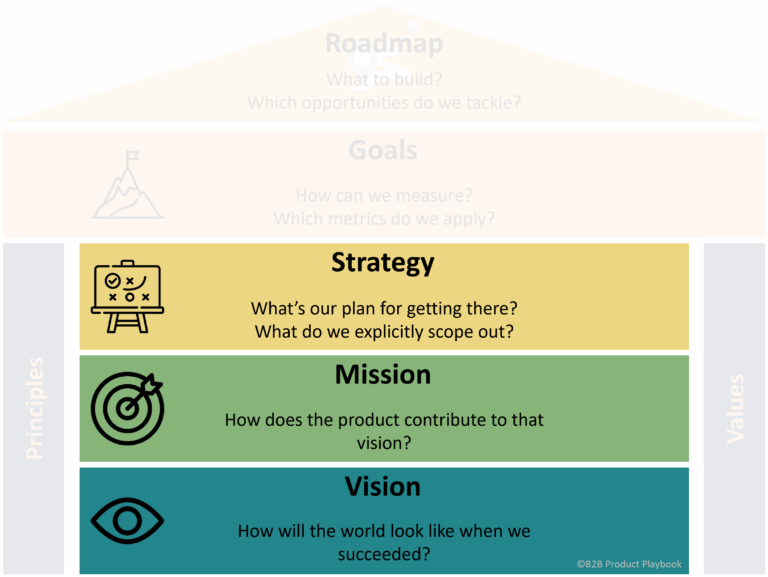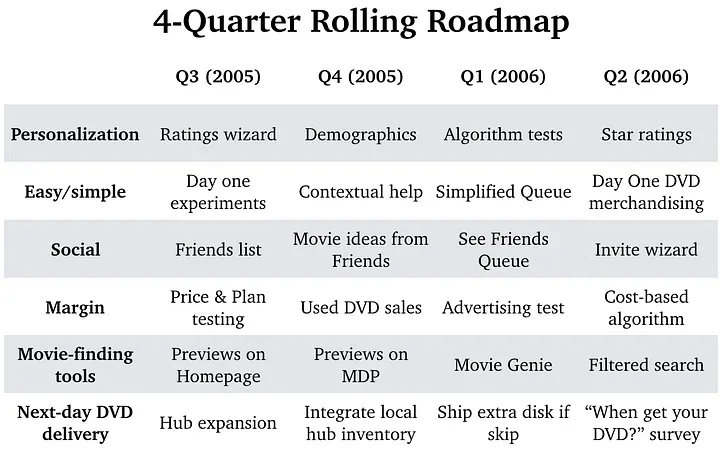From Mission to Product Strategy
What is a Product Strategy?
As with mission and vision, we see a lot of confusion around what exactly is a product strategy. For some, strategy is the process of crafting a vision; for others, it is a detailed plan including all features on a roadmap. Instead, product strategy shall be considered as the link between high-level vision and the daily work of teams on the tactical level, where the strategy provides guidance without prescribing details:
A product strategy is a high-level plan describing what a business hopes to accomplish with its product and how it plans to do so. The strategy should answer key questions such as who the product will serve (personas), how it will benefit those personas, and the company’s goals for the product throughout its life cycle.
Product Strategy outlines the most promising direction for reaching that future state. For example, which problems will you solve? Who will use your product? Which business objectives will you aim for? In short, a Product Strategy defines how you will get there.
Product strategy defines the high-level plan for developing and marketing a product, how the product supports the business strategy and goals, and is brought to life through product roadmaps.
Putting all of that together, we define product strategy by adjusting ProductPlan’s description:
Product strategy is a high-level plan describing what a business plans to accomplish with its product. The strategy answers key questions such as who the target customers are, what the key benefits for them shall be, and what makes to product unique in the market.
Strategy Provides Direction and Clarity
While tactical details will be addressed later on the roadmap and feature level, the product strategy is crucial to ensure alignment across the entire organization:
- For teams often drowning in technical details, the strategy ensures an understanding of the long-term objectives — how pieces fit together beyond the immediate goals and features. This affects Engineering teams as well as Consulting, Sales, Marketing, or Customer Success.
- Across the company, product strategy serves as a framework for decision making guiding daily decisions around design, development, pricing, marketing, and distribution. Thus, the strategy helps to decide what to do and what not to do as well as with prioritization.
- When done well, the product strategy explicitly states what makes the product unique. No matter whether these are technical aspects, a top-notch user experience, or a different go-to-market — these provide guardrails for decision-making and ruling out bad ideas at an early stage.
You know that your product strategy works when internal teams approach the Product Management team pointing out issues, problems, or gaps in the product and explaining how these actually violate parts of the strategy.
Mario Lenz
Strategy Means Making Choices
On the way toward making the lives of customers easier, product strategy primarily means to decide about what to do and what not to do (now). A great litmus test to check the effectiveness of a strategy is to decompose it and, for each element, check whether aiming for the opposite would sound dumb:
- We want to build the best tool for… — well, who would aim for delivering the worst?
- We want to delight users… — well, who wants to frustrate them intentionally?
- We build stable tools for… — well, who would intentionally deliver software that falls apart?
To avoid such dumb statements, we suggest considering reasonable alternatives, checking what some competitors do, or what the current status quo is — and then describing how these aspects will be handled differently. Let us look at a few examples:
Instead of serving customers across the globe, we focus on a specific region where we have boots on the ground.
Instead of serving customers across all verticals, we focus on a few selected industries where we have deep domain expertise and great reference customers.
Instead of building complex integrations as required by certain customers, we focus on quick time to value with highly standardized products that are applicable to the majority of customers.
Instead of extending the product offering with massive consulting, we focus on the digital product and partner with consulting agencies.
Instead of building bespoke solutions for customers willing to pay premium prices, we focus on on mid-market customers looking for turn-key solutions that can quickly be implemented.
Instead of serving enterprise customers operating at a global scale, we focus on small and medium businesses that are often easier to satisfy and less demanding when it comes to internationalization, scalability, integrations, compliance needs, etc.
Instead of extending a complex and dated architecture for mobile usage, we focus on mobile-first technology and user experiences.
As an example, at Quentic we referred to zero hassle as part of our product strategy. Here, zero hassle was explained as: Easy to use for blue-collared workers, but also easy to implement, with quick time to value instead of extensive implementation projects.
The product strategy will typically consist of a handful of aspects, similar to the examples given in the above table. Sometimes referred to as strategic work streams, Melissa Perri uses the term strategic intents:
Strategic intents communicate the company's current areas of focus that help realize the vision.
Melissa Perri | Escaping the Build Trap
Strategy is Valid Medium-Term
- Hopefully, some of the strategic intents will be achieved by the team over time. Say, a specific market entry will be successful, or a new target segment has been unlocked. After achieving such a major milestone, it’s about time to craft a new strategy to define where to go next.
- Likewise, markets change and hence there might be external factors forcing a change in strategy.
- While initially revolutionary, some technologies may become table stakes over time — so they are no longer unique and worth mentioning them as part of the product strategy.
Strategy Extended by Product Attributes
- aspects of technical architecture or non-functional requirements, such as a promise to always keep all services deeply integrated
- focus on top-notch usability e.g. by always striving for the best user experience
- a selection of technical approaches for implementation, e.g. whether a product is fully self-service or requires extensive service integration partners to be implemented
- design criteria to help with decisions, e.g. whether to favor the buyer or the seller in a marketplace in case of conflicting requirements
Strategy Bridges from Vision to Roadmap
We will see how to come From Strategy to Product Roadmap in a later chapter. For now, let us emphasize how a great strategy helps to structure the work of teams: When there is an alignment around a handful of strategic intents, as described above, then each of these will probably be worked on for several months or even quarters and consist of multiple experiments, implementation projects, and technical approaches.
By grouping all these together, under the headline of the respective strategic intent that they are serving, the roadmap can be organized in a way that provides a high-level overview and shows how pieces fit together, with the ability to narrow down on details when needed. Oftentimes, this is reflected by the roadmap being organized in swimlanes where each of these swimlanes reflects a specific strategic intent as shown in this example by Gibson Biddle:
Further Reading
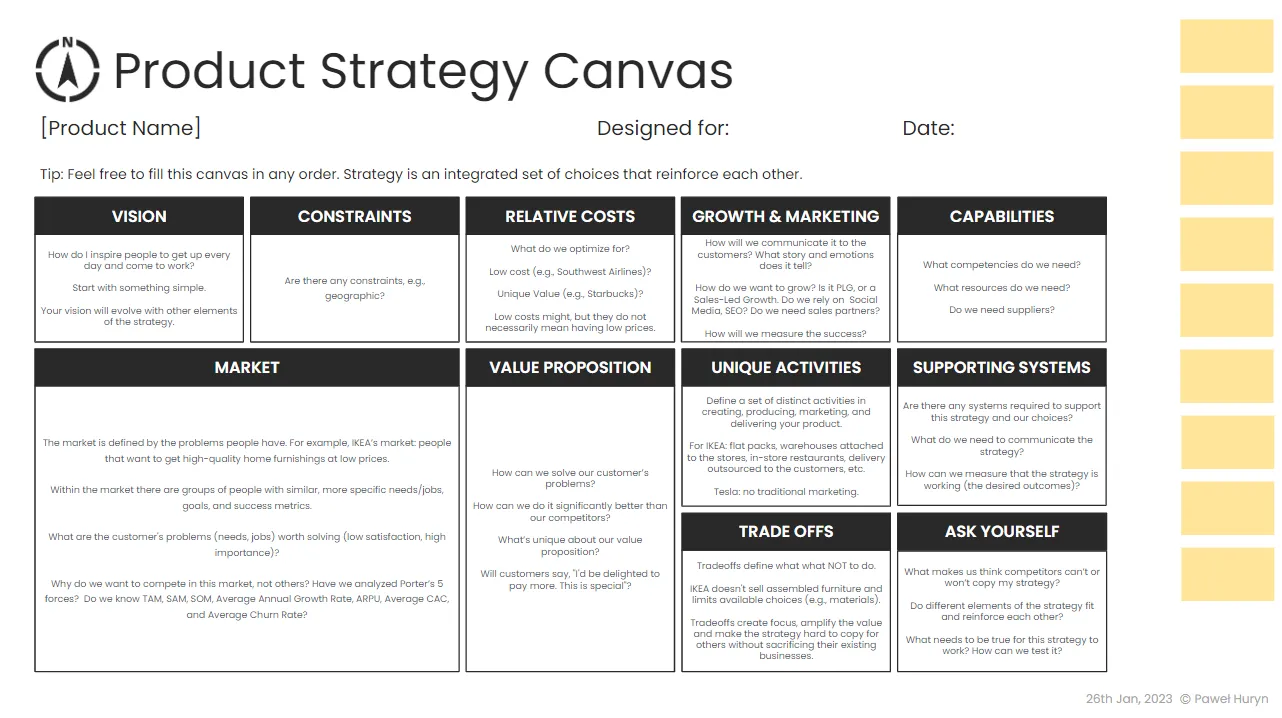
Introducing the Product Strategy Canvas
After 5 months, I could not find a single Product Strategy Canvas I could recommend. So here is a new one.
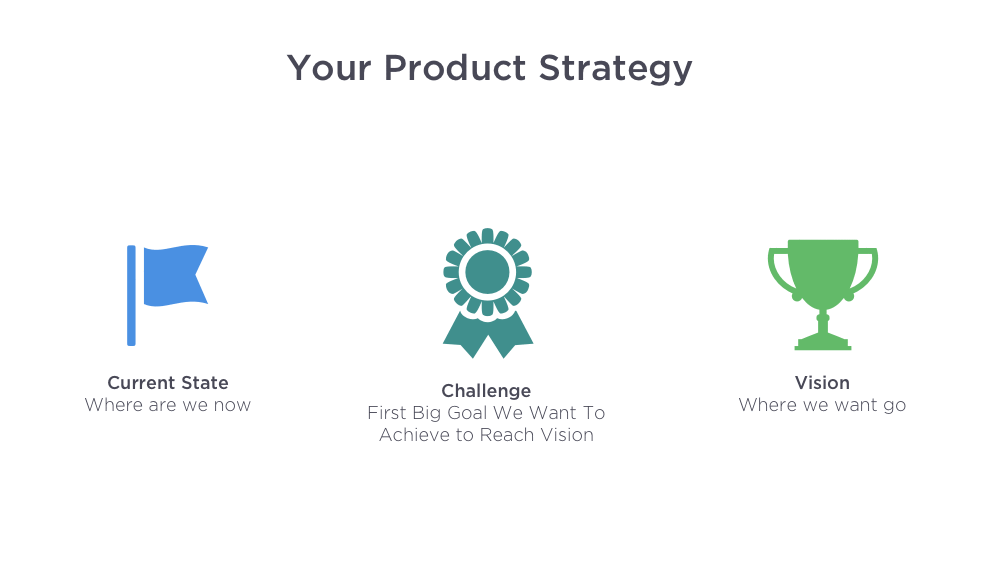
What is Good Product Strategy?
Product Strategy is a system of achievable goals and visions that work together to align the team around desirable outcomes for both the business and your customers.
How to Define Your Product Strategy
Foreword to a twelve-part series on product strategy.

The Strategy/Metric/Tactic Lockup
How to assign metrics and tactics to each product strategy.

A Summary of all the Product Strategy Frameworks
Plus all the step-by-step exercises in one place to help you define your company’s product strategy.

The Cost of a Bad Product Strategy
We spend lots of time praising the savvy strategic moves of winning products and companies. But for every success story, there’s a graveyard of failed products laid low by bad product strategies.
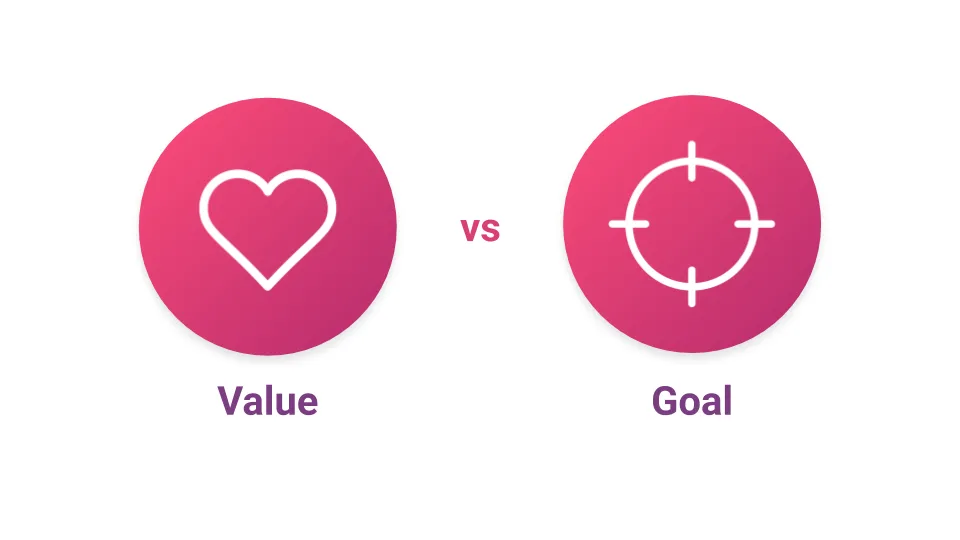
How to Define a Product Strategy: The Value-Based Approach
In this post, I’m going to go into depth on the first — why I believe a ‘value-based’ approach to defining a product strategy is most effective and what that actually looks like.

4 Elements of an Effective Product Strategy
Becoming an effective product leader starts with an understanding of what a great product strategy looks like and how it compares to undifferentiated good product strategies.

